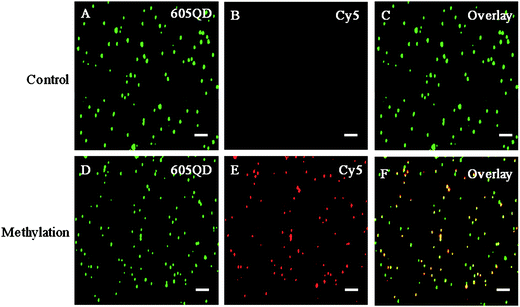 Open Access Article
Open Access ArticleCreative Commons Attribution 3.0 Unported Licence
Correction: Single quantum dot-based nanosensor for sensitive detection of 5-methylcytosine at both CpG and non-CpG sites
Zi-yue
Wang
a,
Li-juan
Wang
a,
Qianyi
Zhang
b,
Bo
Tang
*a and
Chun-yang
Zhang
*a
aCollege of Chemistry, Chemical Engineering and Materials Science, Collaborative Innovation Center of Functionalized Probes for Chemical Imaging in Universities of Shandong, Key Laboratory of Molecular and Nano Probes, Ministry of Education, Shandong Provincial Key Laboratory of Clean Production of Fine Chemicals, Shandong Normal University, Jinan 250014, China. E-mail: cyzhang@sdnu.edu.cn; Fax: +86-0531-82615258; Tel: +86-0531-86186033
bNantou High School Shenzhen, Shenzhen, 518052, China
First published on 31st January 2018
Abstract
Correction for ‘Single quantum dot-based nanosensor for sensitive detection of 5-methylcytosine at both CpG and non-CpG sites’ by Zi-yue Wang et al., Chem. Sci., 2018, DOI: 10.1039/c7sc04813k.
The authors regret that the incorrect Fig. 3 and the incorrect TOC entry were included in the original manuscript. The correct Fig. 3 is presented herein and an updated TOC entry accompanies the manuscript on the platform.
The Royal Society of Chemistry apologises for these errors and any consequent inconvenience to authors and readers.
| This journal is © The Royal Society of Chemistry 2018 |

